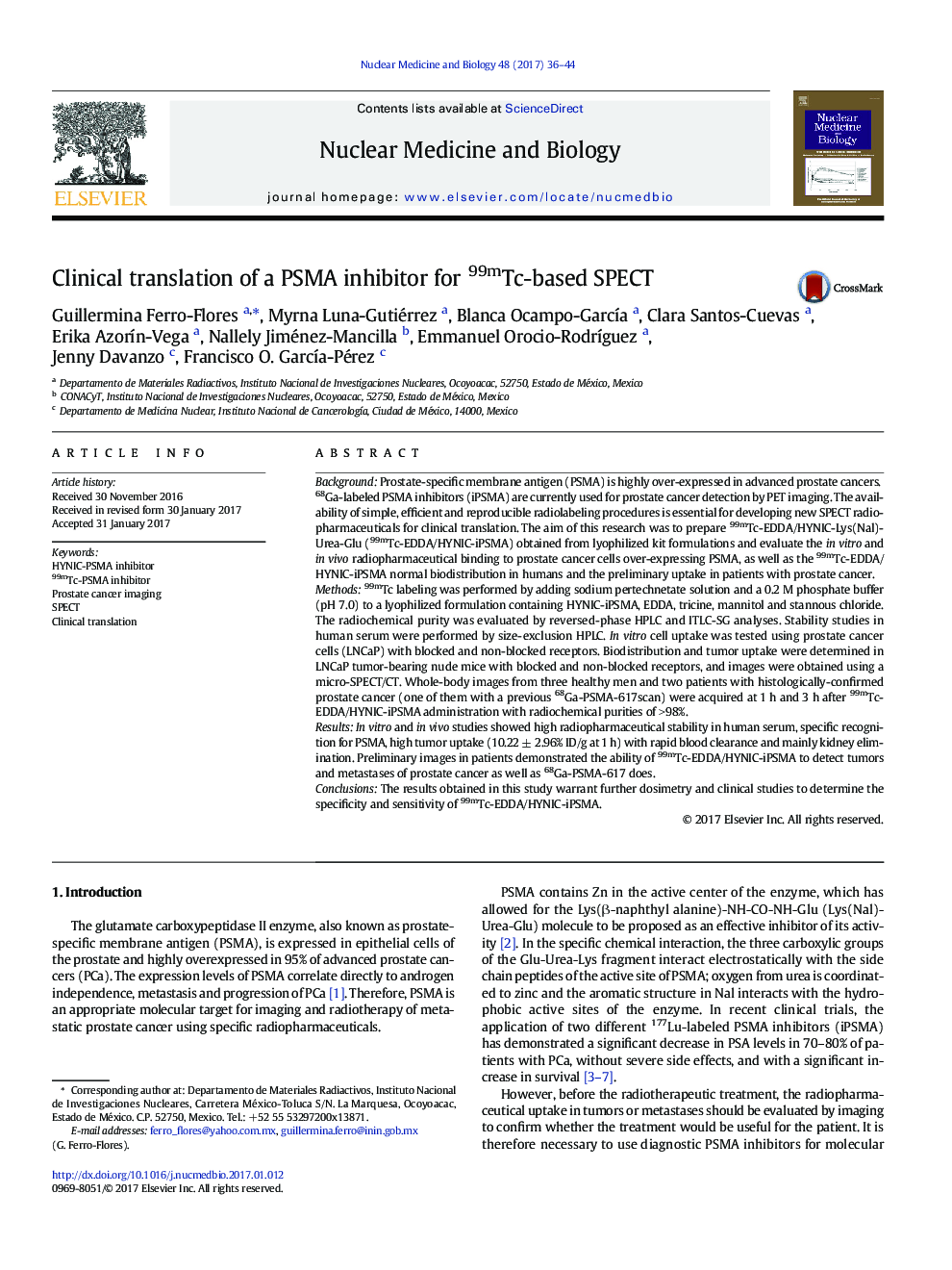| Article ID | Journal | Published Year | Pages | File Type |
|---|---|---|---|---|
| 5528983 | Nuclear Medicine and Biology | 2017 | 9 Pages |
BackgroundProstate-specific membrane antigen (PSMA) is highly over-expressed in advanced prostate cancers. 68Ga-labeled PSMA inhibitors (iPSMA) are currently used for prostate cancer detection by PET imaging. The availability of simple, efficient and reproducible radiolabeling procedures is essential for developing new SPECT radiopharmaceuticals for clinical translation. The aim of this research was to prepare 99mTc-EDDA/HYNIC-Lys(Nal)-Urea-Glu (99mTc-EDDA/HYNIC-iPSMA) obtained from lyophilized kit formulations and evaluate the in vitro and in vivo radiopharmaceutical binding to prostate cancer cells over-expressing PSMA, as well as the 99mTc-EDDA/HYNIC-iPSMA normal biodistribution in humans and the preliminary uptake in patients with prostate cancer.Methods99mTc labeling was performed by adding sodium pertechnetate solution and a 0.2 M phosphate buffer (pH 7.0) to a lyophilized formulation containing HYNIC-iPSMA, EDDA, tricine, mannitol and stannous chloride. The radiochemical purity was evaluated by reversed-phase HPLC and ITLC-SG analyses. Stability studies in human serum were performed by size-exclusion HPLC. In vitro cell uptake was tested using prostate cancer cells (LNCaP) with blocked and non-blocked receptors. Biodistribution and tumor uptake were determined in LNCaP tumor-bearing nude mice with blocked and non-blocked receptors, and images were obtained using a micro-SPECT/CT. Whole-body images from three healthy men and two patients with histologically-confirmed prostate cancer (one of them with a previous 68Ga-PSMA-617scan) were acquired at 1 h and 3 h after 99mTc-EDDA/HYNIC-iPSMA administration with radiochemical purities of >98%.ResultsIn vitro and in vivo studies showed high radiopharmaceutical stability in human serum, specific recognition for PSMA, high tumor uptake (10.22 ± 2.96% ID/g at 1 h) with rapid blood clearance and mainly kidney elimination. Preliminary images in patients demonstrated the ability of 99mTc-EDDA/HYNIC-iPSMA to detect tumors and metastases of prostate cancer as well as 68Ga-PSMA-617 does.ConclusionsThe results obtained in this study warrant further dosimetry and clinical studies to determine the specificity and sensitivity of 99mTc-EDDA/HYNIC-iPSMA.
